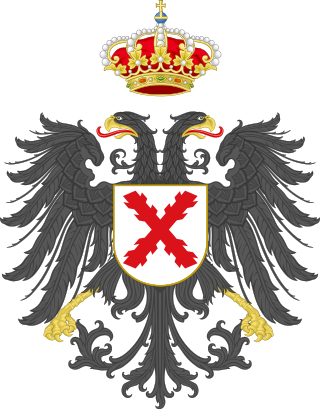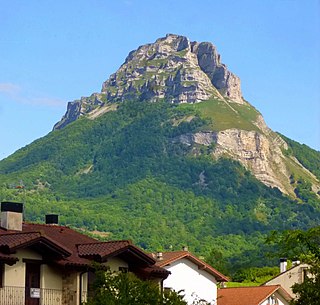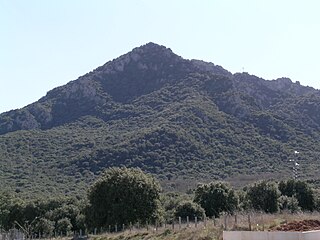
Carlism is a Traditionalist and Legitimist political movement in Spain aimed at establishing an alternative branch of the Bourbon dynasty, one descended from Don Carlos, Count of Molina (1788–1855), on the Spanish throne.

The Carlist Wars were a series of civil wars that took place in Spain during the 19th century. The contenders fought over claims to the throne, although some political differences also existed. Several times during the period from 1833 to 1876 the Carlists—followers of Don Carlos (1788–1855), an infante, and of his descendants—rallied to the cry of "God, Country, and King" and fought for the cause of Spanish tradition against liberalism, and later the republicanism, of the Spanish governments of the day. The Carlist Wars had a strong regional component, given that the new order called into question region–specific law arrangements and customs kept for centuries.

Baldomero Fernández-Espartero y Álvarez de Toro was a Spanish marshal and statesman. He served as the Regent of the Realm, three times as Prime Minister and briefly as President of the Congress of Deputies. Throughout his life, he was endowed with a long list of titles such as Prince of Vergara, Duke of la Victoria, Count of Luchana, Viscount of Banderas and was also styled as "the Peacemaker".

The First Carlist War was a civil war in Spain from 1833 to 1840, the first of three Carlist Wars. It was fought between two factions over the succession to the throne and the nature of the Spanish monarchy: the conservative and devolutionist supporters of the late king's brother, Carlos de Borbón, became known as Carlists (carlistas), while the progressive and centralist supporters of the regent, Maria Christina, acting for Isabella II of Spain, were called Liberals (liberales), cristinos or isabelinos. Aside from being a war of succession about the question who the rightful successor to King Ferdinand VII of Spain was, the Carlists' goal was the return to a traditional monarchy, while the Liberals sought to defend the constitutional monarchy.

Arbizu is a village and municipality in the province and autonomous community of Navarre, northern Spain, neighbouring Etxarri-Aranatz. Its traditional "fiesta" falls on June 24, St. John's day, and is noted for the feast held in the main square.

Echarri is a town and municipality located in the province and autonomous community of Navarre, northern Spain.
Sesma is a town and municipality located in the province and autonomous community of Navarre, northern Spain. It was the scene of action between Liberals under Narciso Lopez, and Carlists under Mendiry, during the First Carlist War, on 5th. November 1834 following the Carlist victory at Vitoria.

Etcharry is a commune in the Pyrénées-Atlantiques department in south-western France.

The Third Carlist War, which occurred from 1872 to 1876, was the last Carlist War in Spain. It is sometimes referred to as the "Second Carlist War", as the earlier "Second" War (1847–1849) was smaller in scale and relatively trivial in political consequence.

DomSebastian Gabriel de Borbón y Braganza, Infante of Portugal and Spain, was an Iberian prince of the 19th century, progenitor of the Spanish ducal lines of Hernani, Ansola, Dúrcal and Marchena, and Carlist army commander in the First Carlist War.
The Carlist Party is a Spanish political party that considers itself as a successor to the historical tradition of Carlism. The party was founded in 1970, although it remained illegal until 1977 following the death of the caudillo Francisco Franco and the democratisation of Spain.
The Battle of Alsasua, also known as the Battle of Altsasu or la Acción de la Venta de Alsasua, occurred on April 22, 1834 in Navarre, Spain, during the First Carlist War. Carlist general Tomás de Zumalacárregui attacked a convoy led by the Liberal general Vicente Genaro de Quesada traveling from Vitoria-Gasteiz to Pamplona at the town of Alsasua.

Montejurra in Spanish and Jurramendi in Basque are the names of a mountain in Navarre region (Spain). Each year, it hosts a Carlist celebration in remembrance of the 1873 Battle of Montejurra during the Third Carlist War. In 2004, approximately 1,000 persons turned out.

Valle de Villaverde is a town and municipality in the autonomous community of Cantabria, Spain. It is surrounded by the Basque municipalities of Carranza, Arcentales, and Trucíos, but the town belongs to the administration of the government of Cantabria. Thus, it is an enclave of Biscay and an exclave of Cantabria.

The Nationalist faction or Rebel faction was a major faction in the Spanish Civil War of 1936 to 1939. It was composed of a variety of right-leaning political groups that supported the Spanish Coup of July 1936 against the Second Spanish Republic and Republican faction and sought to depose Manuel Azaña, including the Falange, the CEDA, and two rival monarchist claimants: the Alfonsist Renovación Española and the Carlist Traditionalist Communion. In 1937, all the groups were merged into the FET y de las JONS. After the death of the faction's early leaders, General Francisco Franco, one of the members of the 1936 coup, headed the Nationalists throughout most of the war, and emerged as the dictator of Spain until his death in 1975.

Spanish irredentism mainly focuses on claims over the British overseas territory of Gibraltar, whose long-standing territorial vindication as a British colony is enshrined in the Spanish foreign policy. Along history, other minor irredentist proposals have claimed territories such as the whole of Portugal, Andorra, parts of Northern Africa, the Roussillon and the French Basque Country.

Hesian was created in the spring of 2006. The music they play is a mix of punk rock, hardcore and a bit of ska style. The most distinctive feature of the group is the contrast of the female and the male voices. The aim of Hesian is to reflect through their lyrics real situations in their lives, including the political conflicts of the Basque Country, love, women´s situation and poverty.

The Traditionalist Communion was one of the names adopted by the Carlist movement as a political force since 1869.

Maria Isabel Pozueta Fernández is a Basque sexologist, activist, politician and a member of the Congress of Deputies of Spain.

Navarrese nationalism is a political and social movement that claims Navarre to be a nation.



















